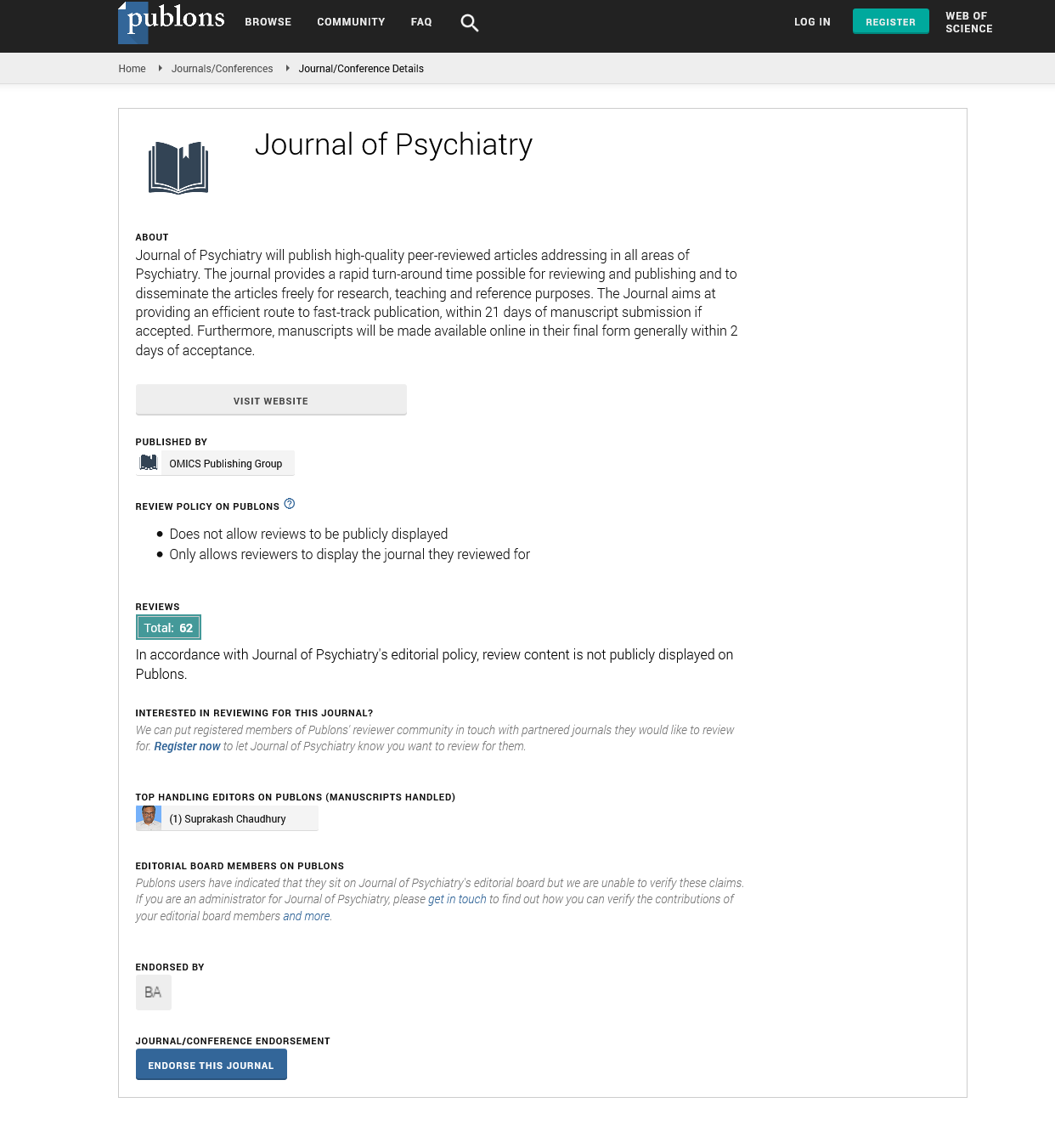Indexed In
- RefSeek
- Hamdard University
- EBSCO A-Z
- OCLC- WorldCat
- SWB online catalog
- Publons
- International committee of medical journals editors (ICMJE)
- Geneva Foundation for Medical Education and Research
Useful Links
Share This Page
Open Access Journals
- Agri and Aquaculture
- Biochemistry
- Bioinformatics & Systems Biology
- Business & Management
- Chemistry
- Clinical Sciences
- Engineering
- Food & Nutrition
- General Science
- Genetics & Molecular Biology
- Immunology & Microbiology
- Medical Sciences
- Neuroscience & Psychology
- Nursing & Health Care
- Pharmaceutical Sciences
Mass smartphone dependency syndrome in the Middle East: An exploratory study
19th Global Congress on Pediatricians & Child Psychiatry
July 12-13, 2017 Chicago, USA
Anamika Misra and Neda June Salazar
HCT-Sharjah Women College, UAE
Posters & Accepted Abstracts: J Psychiatry
Abstract:
Internet addiction disorder (IAD) was first introduced by the psychiatrist Ivan Goldberg in the year 1995. Though the internet addiction disorder, also known as problematic internet use (PIU) has not found its rightful place in the DSM, one cannot ignore itā??s increasing presence and problematic effects in daily lives. The revolutionary release of the first iPhone in January 2007 bought about a new aspect to IAD by providing a 24/7 internet interface to people to such an extent that smartphones became their alter self. This easy availability of internet access and the plethora of online applications has made the current smartphone users much more vulnerable to developing IAD or as we would like to call it, mass smartphone dependency syndrome. The existing research on smartphone dependency is limited with hardly any focus on the Middle East. The UAE has the highest per capita mobile phone penetration in the Middle East and over 91% of the UAE population used a smartphone in last one year. UAE also has highest internet penetration in the world with over 99% of population having internet connection. On an average UAE population spend over 4 hours on internet everyday. Social media plays a major role within this daily online time, with 88% of 16-24 years saying they use social networking apps and 86% using messaging apps. Thatā??s yet more evidence for why instant, mobile-first strategies are so key to engaging this group. This paper proposes fill the gap in research by studying the nature of smartphone addiction in the UAE by studying specific traits such as FOMO (fear of missing out) culture, overconnection syndrome and technostress by conducting a focused group discussion amongst the school and college counsellors based in the UAE. FOMO was first defined by Dr Dan Herman in year 2000, as a clearly fearful attitude towards the possibility of failing to exhaust available opportunities and missing the expected joy associated with succeeding in doing so. The overconnection syndrome occurs when mobile phone use reduces the amount of face-to-face interactions thereby interfering significantly with an individualā??s social and family interactions. The term techno-stress is another way to describe an individual who avoids face-to-face interactions by engaging in isolation including psychological mood disorders such as depression. Craig Brod, a leader in the field of technostress research, states that technostress is a modern disease of adaptation caused by an inability to cope with the new computer technologies in a healthy manner. This approach will provide a professional insight on the effect of smartphones on young adults and what could be the leading cause of smartphone dependency amongst this population.
Biography :
Email: amisra@hct.ac.ae

